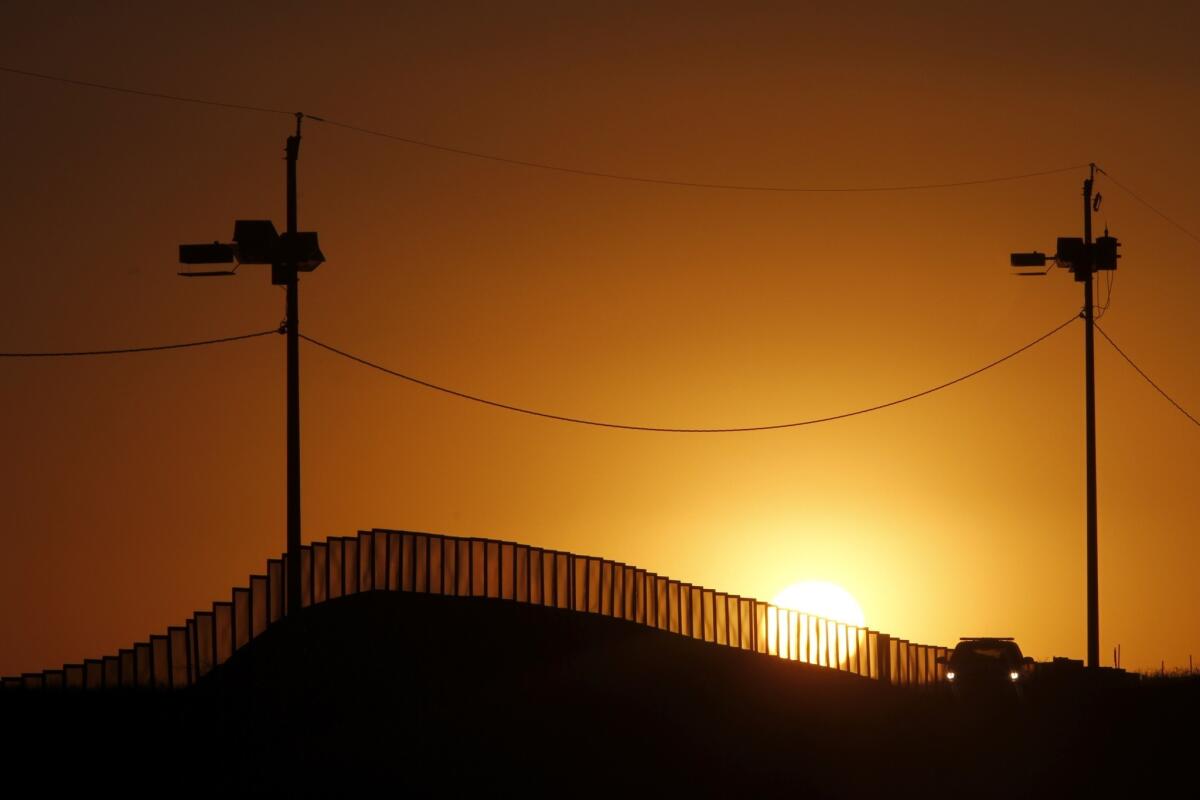GAO says border technology plan may be $700-million waste

- Share via
WASHINGTON -- A high-tech effort to boost border security has no evaluation system so the money may be wasted on cameras and sensors that don’t help Border Patrol agents, according to a report released Wednesday by the Government Accountability Office, the investigative arm of Congress.
Investigators found that lack of reliable data makes it difficult to evaluate whether the new camera towers and motion detectors have assisted Border Patrol agents. The agents are not required to document when they use the technology to help catch drug smugglers and immigrants crossing the border illegally, so records are incomplete.
Agents didn’t record using surveillance technology for 87% of the apprehensions between October 2010 and June 2013 in the Yuma sector of the border in western Arizona, the study found. In the Tucson sector in central Arizona, about 69% of apprehensions during that time had no record of surveillance equipment being used.
Customs and Border Protection cannot “determine the contribution of surveillance technologies in the apprehension of illegal entrants and seizure of drugs and other contraband during the specified time frame,” the report concludes.
Called the Arizona Border Surveillance Technology Plan, the program was launched in November 2011 to replace a previous border technology push, the Secure Border Initiative Network, that cost $1 billion, had a high error rate, and ended up covering only a 53-mile stretch of the Arizona border with Mexico.
The head of Customs and Border Protection’s technology programs, Mark Borkowski, defended the new program during a hearing of the House border and maritime security subcommittee on Wednesday.
Borkowski said the surveillance technology plan, unlike its ill-fated predecessor, will cover more ground and save money over time because it relies on “off-the-shelf” equipment and doesn’t need to be engineered from scratch. Borkowski estimated the program would ultimately cost between $500 million to $700 million over the next 10 years.
Borkowski rejected the investigators’ recommendations that his agency create a master plan and a formal evaluation program for the entire border, saying that those steps would add new layers of bureaucracy, slow down the acquisition of equipment and increase costs.
The agency has decided to break the plan into seven programs that have separate time lines and testing schedules. Each system, which includes fixed cameras and sensor towers, long-range night-vision scopes mounted on trucks, and other surveillance technology, will be evaluated on its own, Borkowski said.
Borkowski said that the Border Patrol is working to improve how it records when the technology is used.
“We want to collect the data, but I would caution, until we collect it and study it, it is still an open question as to how much utility it would provide us,” he said.
Rep. Beto O’Rourke, D-Tex., told Borkowski that the agency needs to explain why it is rejecting the GAO recommendations.
“I think we need to stop this program now,” O’Rourke said. “I think this money could be much better used in much better ways.”
brian.bennett@latimes.com
Twitter: @ByBrianBennett
More to Read
Sign up for Essential California
The most important California stories and recommendations in your inbox every morning.
You may occasionally receive promotional content from the Los Angeles Times.











